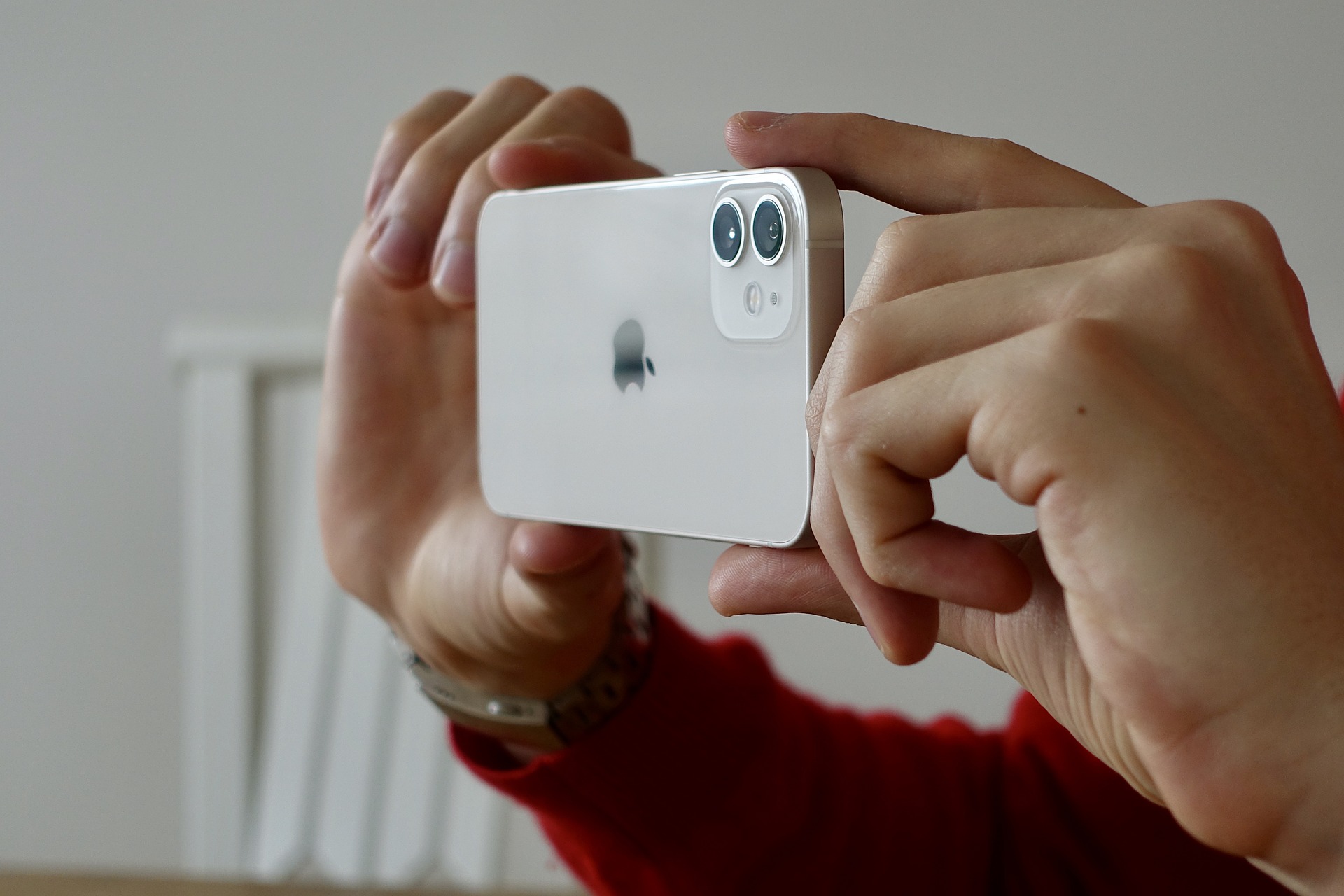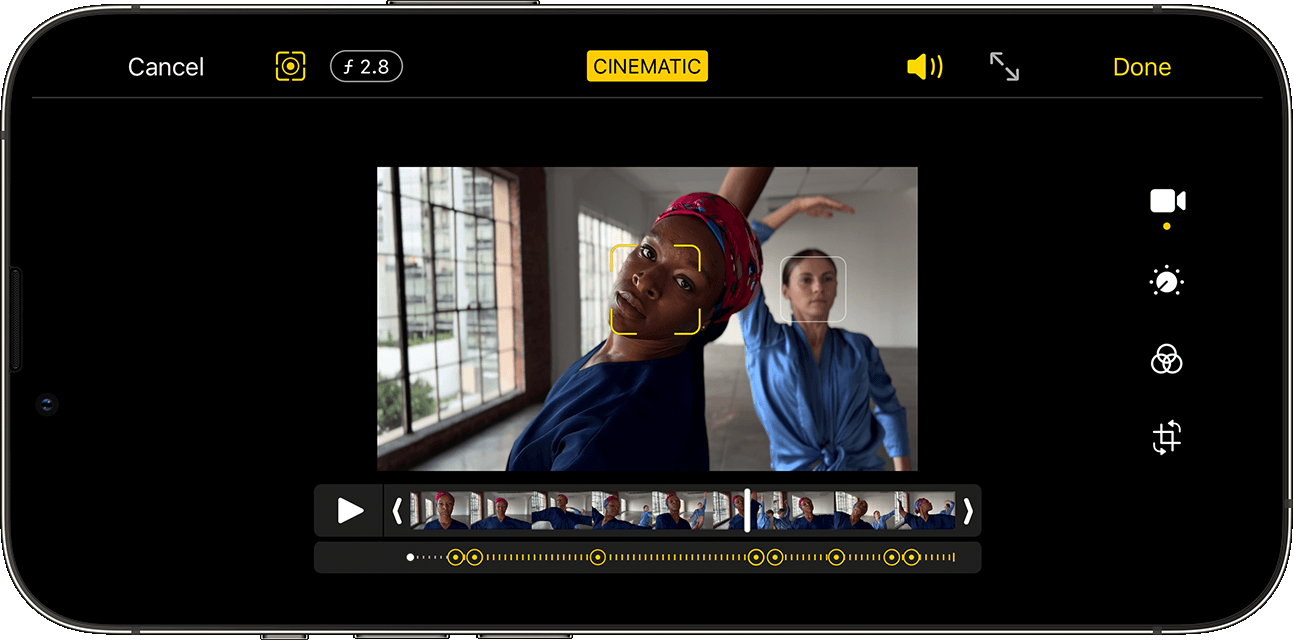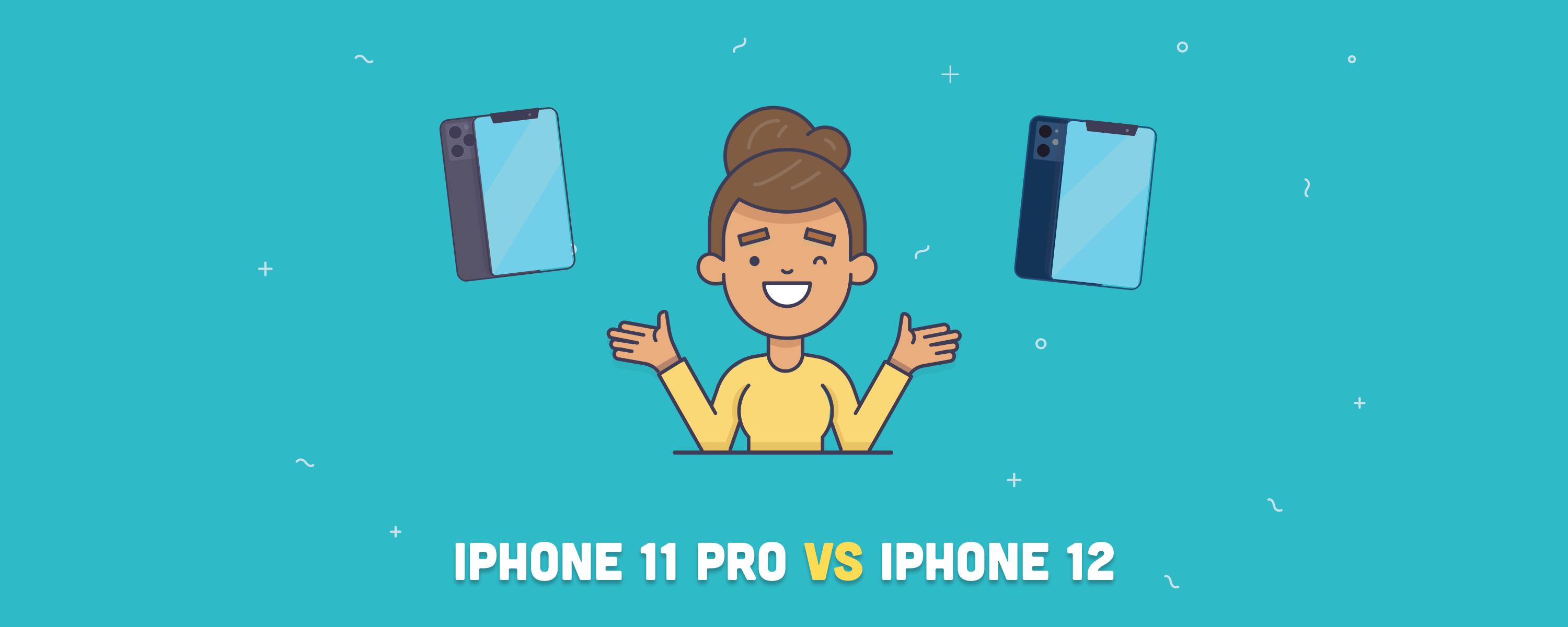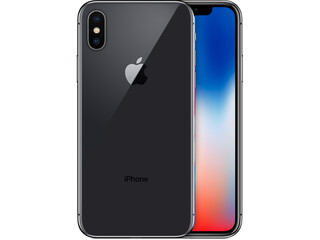The iPhone 13 is the direct successor to the iPhone 12 and was launched in 2021. Its improvements include a brighter display, better rear cameras, Cinematic mode, better performance powered by its A15 Bionic chip, longer battery life, and the possibility of having a 512 GB storage capacity. But what exactly are the differences and similarities between the iPhone 12 and iPhone 13? Is it worth upgrading? Which one is better for you? Keep reading.
Table of contents
iPhone 12 vs. iPhone 13: Differences
The following table shows the most important differences between the iPhone 12 and iPhone 13 at a glance.
| Feature | iPhone 12 | iPhone 13 |
|---|---|---|
| Display | Super Retina XDR with 625 nits peak brightness (typical) | Super Retina XDR with 800 nits peak brightness (typical) |
| Processor | A14 Bionic chip | A15 Bionic chip |
| Battery life | Up to 17 hours of video playback | Up to 19 hours of video playback |
| HDR | Smart HDR 3 for photos | Smart HDR 4 for photos |
| Photographic Styles | No | Yes |
| Cinematic Mode | No | Yes |
| Video recording | Dolby Vision HDR up to 4K at 30 FPS | Dolby Vision HDR up to 4K at 60 FPS |
| SIM | Dual SIM (nano-SIM and eSIM) | Dual SIM (nano-SIM and eSIM) and dual eSIM support |
| Weight | 164 grams | 174 grams |
| Storage | 64GB / 128GB / 256GB | 128GB / 256GB / 512GB |
| Max OS compatibility | iOS 17 | iOS 17 |
| Colors | White, black, blue, purple, green, and PRODUCT(Red) | Starlight, Midnight, blue, pink, green, and PRODUCT(Red) |
| Price (new) | Starting at | Starting at |
| Price (refurbished) | Starting at | Starting at |
iPhone 12 vs. iPhone 13: Similarities
The iPhone 12 and 13 have the following similarities:
- 6.1-inch Super Retina XDR OLED display with HDR, True Tone, and Haptic Touch
- Ceramic Shield display material
- Aerospace-grade aluminum construction
- 6-core A-Series processor
- 4GB RAM
- Dual 12MP ƒ/2.4 ultra wide-angle and ƒ/1.6 wide-angle
- Optical zoom, Night mode, Portrait mode, Deep Fusion, True Tone flash with slow sync
- 4K video recording up to 60 FPS, HDR video recording with Dolby Vision, audio zoom, slow motion video up to 240 FPS at 1080p, and Time-lapse Night mode
- 5G connectivity
- Face ID
- IP68-certified splash, water, and dust resistance
- MagSafe and Qi wireless charging
- Lightning connector
- Available with 128 GB and 256 GB storage
- Available in (Product)Red color
iPhone 12 vs. iPhone 13: Which one should you choose?
Below, we will break down several details of the iPhone 12 and 13 so you know which one is best for your particular use.
Design
The iPhone 12 and 13 have practically similar designs, with trimmed edges, a flat aluminum band on the sides, and a single piece of polished glass on the back.
The most notable difference is that the notch or Face ID is 20% smaller on the iPhone 13, and also the arrangement of the rear cameras, which are diagonal across on the newer model (yes, the latter doesn’t change anything, really).

Beyond this, we can only highlight the difference in the color options available for both handsets. The iPhone 12 is available in white, black, blue, purple, purple, green, and (Product)Red colors, while the iPhone 13 comes in Starlight, Midnight, blue, pink, green, and (Product)Red.
Display
The iPhone 12 and iPhone 13 both have an excellent Super Retina XDR OLED display with HDR, True Tone, and Haptic Touch.
The newer model has 175 nits more brightness during typical non-HDR use, but that’s not a reason we can single out for choosing the 13 over the 12.
Performance
The iPhone 13’s A15 Bionic chip is a mild improvement over its predecessor. However, the time separation between the two Apple CPUs is only one year, so the additional performance does not make a big difference, especially in everyday tasks.
This difference in performance may convince the most demanding gamers, as the GPU speed of the A15 is 1800 MHz, while that of the iPhone 12 is 1200 MHz.
👉 Related: 21 Best Classic and Old iPhone Games You Can Still Play
Camera
The iPhone 12 and iPhone 13 have dual 12 MP rear cameras with ƒ/2.4 ultra wide-angle and one ƒ/1.6 wide-angle. So far, so much the same.
You will notice the difference in the focus and blur technique of the Cinematic mode and the image stabilizer of the iPhone 13. This way, you can create more stable, professional videos and sharper photos.
On the other hand, the 13 has Photographic Styles and smart filters that can enhance or mute colors without affecting skin tone. Styles are selectively applied to an image, unlike a filter that is applied to the entire image.
While both devices can record video with Dolby Vision HDR, the iPhone 13 can record at 60 FPS, as opposed to the iPhone 12’s 30 FPS.

Battery
Apple has improved the battery life of the iPhone 13 with up to 19 hours of video playback, compared to the 17 hours on the iPhone 12.
Although the A15 chip optimizes the battery of the 13, the difference is not too significant. Both offer Qi and MagSafe wireless charging.
Storage
The iPhone 13 has a minimum storage of 128 GB, and the iPhone 12 starts with 64 GB.
If storage is your absolute priority, the 13 offers a model with a maximum of 512 GB for plenty of room to spare.
Conclusion
The iPhone 12 and iPhone 13 are very similar smartphones with few differences to justify upgrading from one model to the other. However, if you have an older model, they are both excellent phones to upgrade to. Consider which features you will use most in your day-to-day life.
If you prioritize the camera above all else, the iPhone 13 offers advanced features, such as the revolutionary Cinematic mode. It’s also a great choice if you’re going to play video games, as its GPU offers increased performance. Both the 12 and 13 have 5G connectivity, something that will increase their durability.
The iPhone 12 is more than enough if you are looking for a powerful smartphone at a lower price since the launch of the iPhone 15 has caused previous models to drop in price, especially if they are refurbished. Additionally, the 12 is compatible with the latest iOS 17, making it an excellent choice.
If you opt to buy a refurbished phone, you will get some substantial discounts for a model that works exactly the same as a factory model. Simply put, it was used by a previous owner but has been completely refurbished and cleaned, with a new professional warranty. What’s more, Apple refurbishes its own iPhones that are hard to distinguish from new.
On RefurbMe, we compare hundreds of refurbished Apple devices at the best discounts and from reputable sellers with excellent track records. Get your refurbished iPhone today!
🆚 Explore more reviews:












